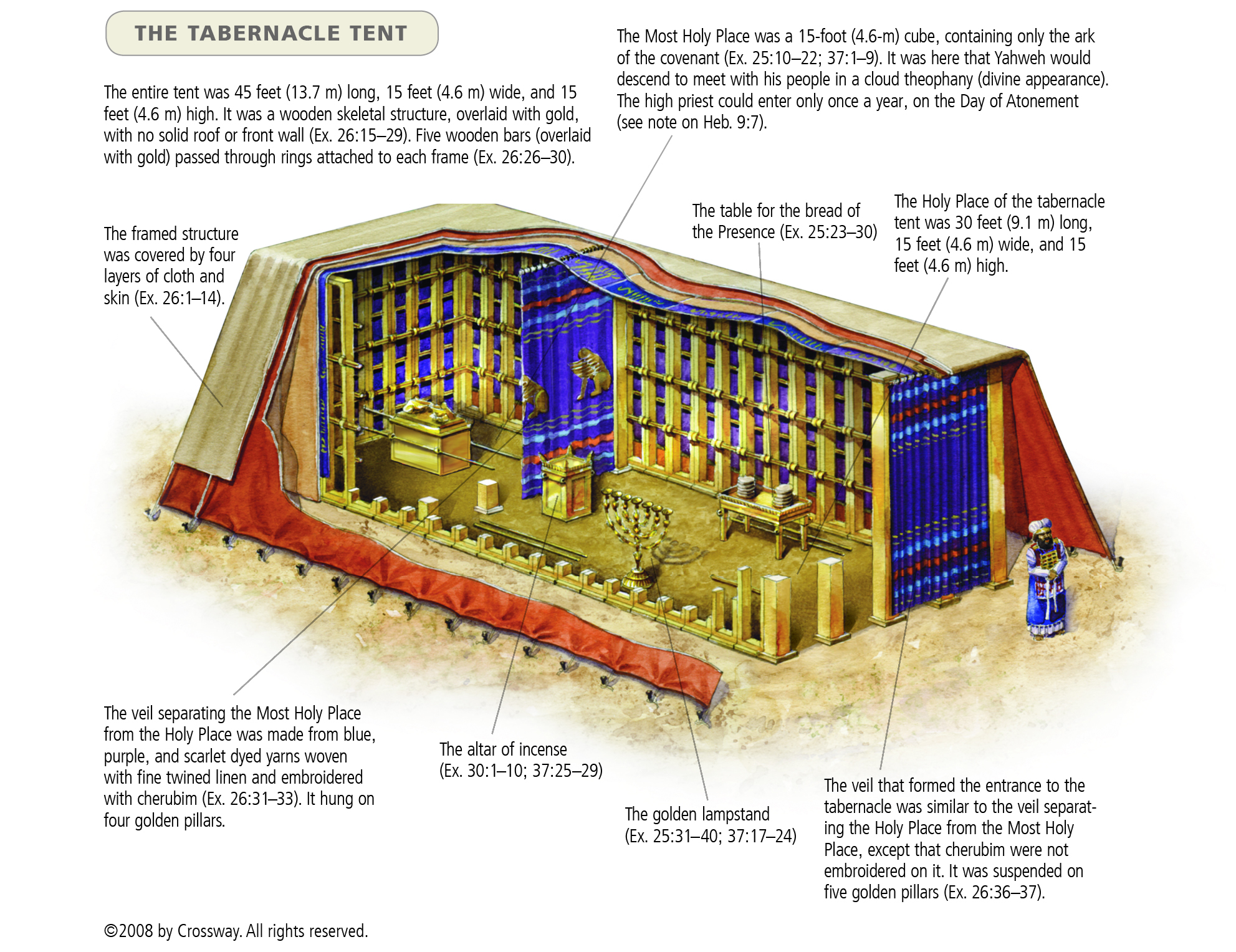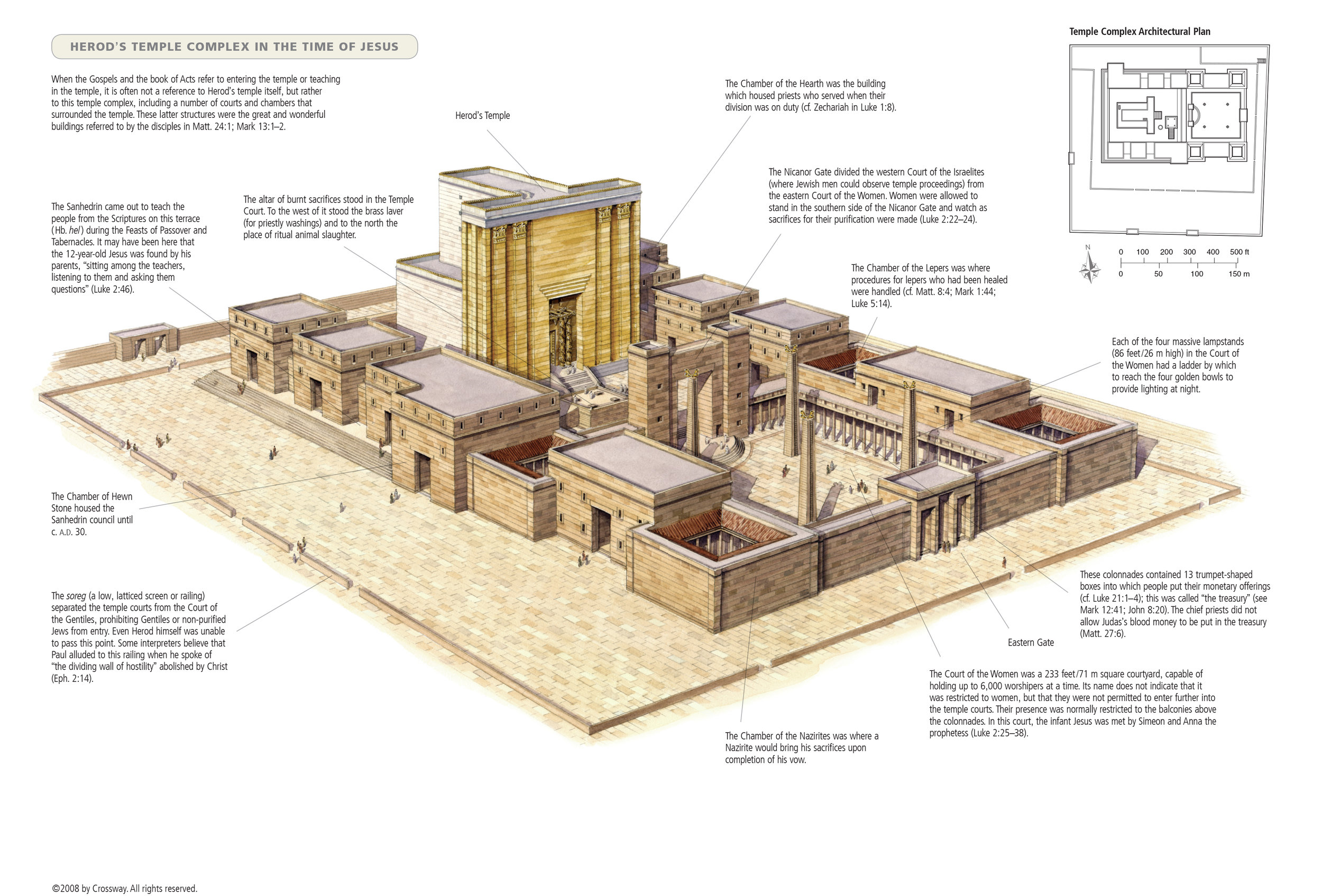The Veil Was Torn in Two: So What?
Listen to the sermon that accompanies this post
Recently, our church has been preaching through a sermon series entitled "God with Us: From the Temple to the Manger". We began by looking at the creation story where God and man dwelled in perfect harmony together. Shortly after, sin entered into the story (Genesis 3) and then God and man no longer could dwell together. However, God began implementing a rescue plan to redeem His people and be with them again. God's plan began by establishing a system to dwell among His people in the Old Testament. Pastor Bryan’s sermon walked us through how God commanded Moses to construct the Tabernacle (Exodus 25:8-9) so that He could dwell in their midst. This system was incredibly complicated and specific down to the smallest detail. God had a very specific design for how He would dwell among them so that His presence wouldn’t harm or kill anyone.
One of the provisions God commanded was that there be two curtains, or veils, to separate the people from the Holy Place and the Most Holy Place. The first curtain was at the entrance of the Tabernacle and the second curtain separated the Holy Place from the Most Holy Place. The Most Holy Place was where the ark of the covenant was placed and where the presence of God resided and appeared. Why does all this matter? Well, as time went on God commanded that a temple should be built for His presence to dwell within. The Tabernacle was always a mobile and temporary option while the temple was to be a more permanent fixture in the midst of God’s people. Long story short, the tabernacle became obsolete and the temple replaced it.
In the Old Testament, we learn about the first temple, also known as Solomon’s Temple (1 Kings 6), as well as the second temple, known as Zerubbabel’s temple (Ezra & Nehemiah). Fast forward to the time of Jesus and we see that Herod the Great had renovated Zerubbabel’s temple as well as constructed the entire temple mount area as well. This is the same temple Jesus was found lingering at when he was a young boy (Luke 2:46), where Jesus would later teach (John 7:14, 37), and also where Jesus flipped a few tables in response to the sacrilegious buying and selling of goods (Mark 11:17). So, with all this in mind, we can now properly be prepared for the radical implications of the veil being torn in two.
The historical reality of the veil being torn in two carries radical implications for our lives as New Covenant Christians. The veil was intricately woven and designed and measured 60 feet high and 30 feet wide. This veil not only separated the Holy Place from the Most Holy Place but also served as a protective barrier between the presence of God and the people.
While the mention the veil being torn in two is relatively short (Matthew 27:51, Mark 15:38, Luke 23:45) it has incredible meaning for how we relate to God and how we view sin, atonement, and justification.
If access to the presence of God was limited to one High Priest once per year that certainly doesn’t sound like “God with us” does it? But if the veil of the temple was torn in two, from top to bottom, then access to the presence of God is now available for anyone and everyone who draws near with repentance and faith in Jesus (Romans 10:8-13). The veil being torn in two now also means that the temple is obsolete, animal sacrifices are obsolete, Levitical priests are obsolete, and the unlimited access to God the Father is now a tangible reality due to the sacrificial death and the spilled blood of Jesus on the cross. Hebrews 10 is one of the most poignant chapters of the implications of the veil being torn in two. I’d encourage you to read it today or this week. These are just a few of the massive implications of the veil being torn in two.
What are some other implications?
1. Jesus’ sacrificial death nullifies the Old Covenant and ushered in the New Covenant.
God will never go back to the old form of relating to His people thanks to Jesus fulfilling and abolishing the old covenant. Hebrews 9:6-7, 13 says: “But as it is, Christ has obtained a ministry that is as much more excellent than the old as the covenant he mediates is better since it is enacted on better promises. 7 For if that first covenant had been faultless, there would have been no occasion to look for a second...13 In speaking of a new covenant, he makes the first one obsolete. And what is becoming obsolete and growing old is ready to vanish away."
What does this mean for us today?
Everything that the Old Covenant entailed, we no longer need. Temples, priests, prophets, animal sacrifices, the priesthood, etc.
Jesus has made the Old Covenant completely irrelevant...therefore, our faith and practice today can actually be radically different because we can be with God and He can be with us through the Holy Spirit
2. Jesus is the Meditator of this New Covenant
Hebrews 9:11-15a says: “But when Christ appeared as a high priest of the good things that have come, then through the greater and more perfect tent (not made with hands, that is, not of this creation) 12 he entered once for all into the holy places, not by means of the blood of goats and calves but by means of his own blood, thus securing an eternal redemption. 13 For if the blood of goats and bulls, and the sprinkling of defiled persons with the ashes of a heifer, sanctify for the purification of the flesh, 14 how much more will the blood of Christ, who through the eternal Spirit offered himself without blemish to God, purify our conscience from dead works to serve the living God. 15 Therefore he is the mediator of a new covenant..."
What does this mean for us today?
The priesthood that stood in the way of us and God has ceased!
You no longer need any human (priest, pope, prophet, or pastor) to mediate your revelation from God; Jesus opened the way for you to communicate with God 24/7 through His Holy Spirit and His Word (Hebrews 1:1-2, Ephesians 3:11-12)
3. God’s presence now lives in you through the indwelling of the Holy Spirit
The apostle Paul expounds on this incredible reality in 1 Cor. 3:16-17 when he writes: "Do you not know that you are God's temple and that God's Spirit dwells in you? If anyone destroys God's temple, God will destroy him. For God's temple is holy, and you are that temple.”
While having the Spirit sounds great many of us would probably admit that we'd rather have Jesus with us in the flesh every day. I know I would! But...interestingly Jesus knew we would desire this and he addressed this issue with His disciples before He left this world. Check out His words on the reality that it is better to have the Spirit in us than Jesus with us (John 16:7-13).
What does this mean for us today?
24/7 access to God; we can draw near to Him at any time
Help, guidance, and direction in knowing the Truth
Strength and power to defeat sin and endure till the end
APPLICATION
1. How do these timeless truths effect your mind, emotions, and behaviors?
2. How firmly do you stand on the New Covenant promises?
3. How readily to take advantage of this unlimited access to God through His Spirit and His Word?
4. Given what you've just read (and possibly listened to) how will you live differently this week?
“And you, who once were alienated and hostile in mind, doing evil deeds, he has now reconciled in his body of flesh by his death, in order to present you holy and blameless and above reproach before him.”
*All images were purchased from the Crossway collection: "ESV Study Bible Artwork: Maps, Illustrations, and Charts & Diagrams" and used by permission. All illustrations can be found and purchased here.



